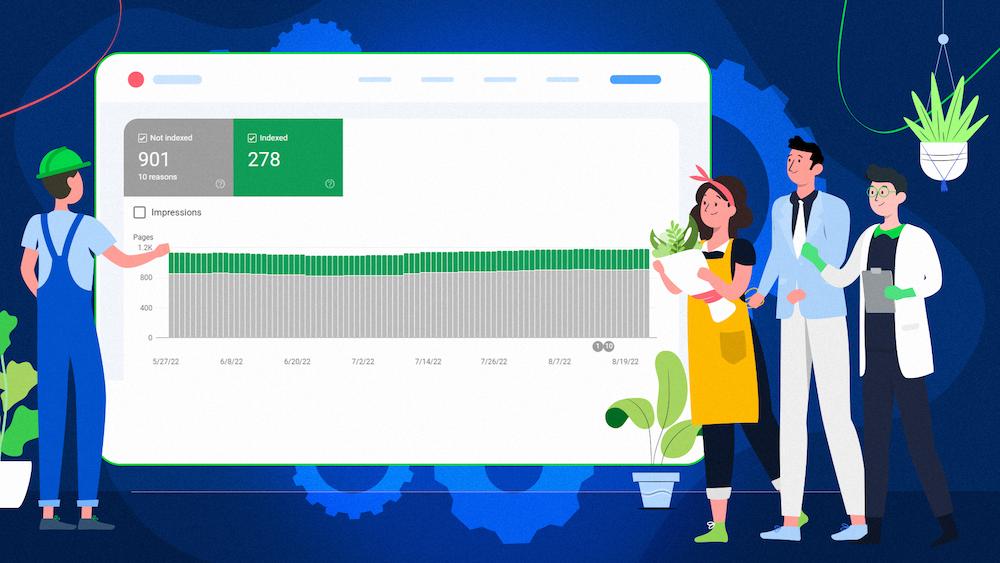To build or not to build – that is the question? Come on, man, don’t waste my time. The answer is, obviously, to build. So how do you do that? Or more importantly, how should you NOT do that? It’s a challenge for every SEO to properly conduct link building. What’s more, every SEO specialist worth their salt knows that link building is a great way to support organic traffic, and consequently attain better visibility and higher rankings. What’s the best method of achieving this in a way that you won’t regret?
What is Link Building for?
It’s 2018 and questions about the effectiveness of link building can still be found throughout the Internet. On the one hand, link building actions like broadcasting great content which users are linking to are highly prized by search engine algorithms. On the other hand, actions taken where low-quality microsites dominate over sites of real value, and where quantity reigns over quality, are not the way to gain a competitive advantage.
Google says that content creation must come naturally by thinking about users, not search engines. Links pointing to the content should be strong and natural so that users can easily pass them along. But the people who spam link-building offers often focus only on the SEO purposes of the process, and not on the quality of the links themselves.
What are the Problems Associated with Poor Link Building Strategies?
Your budget is one of the most important components of planning a marketing campaign and will have a huge impact on the effectiveness of your actions. A budget that is too small or badly allocated will most likely lead to wrong or misguided decisions when it comes to strategy choice. While you will receive offers from private persons or third parties providing link building services, a bad budget means that you are more likely to accept such offers.

There is no shortage of offers for placing links on low-quality sites, blogs, or directories, or bids for comprehensive SEO services, of course, at a “reasonable price.” You should be aware that the amount of money that should be earmarked for marketing activities, and specifically for link building, will depend on variables such as the industry, business strategy, size of the company, etc. It’s difficult to fit the necessary marketing needs of an enterprise into a strict budget, and a rigid time frame, not to mention estimating the increases resulting from such activities.
Keep in mind that Google expects the links to come from users. Unfortunately, people who don’t know these expectations are sometimes willing to cooperate with entities specializing in dubious SEO services without understanding the consequences of these actions.
Examples of Offers Received Daily
Not every emailed proposal is questionable or shady. A lot depends on the specificity of a given country or industry, what the websites look like locally, and which link-building strategies are preferred. The European or American internet looks different than the internet available in developing countries, so link building offers and techniques must vary. However, many people who work in link building will most likely find quality-dubious solutions that can only be used to improve PageRank, not the quality of the content served to users. It’s worth checking out a few different proposals and analyzing them.
Most emails will look eerily similar. Your potential contractor will begin their message by presenting themselves as a consultant/SEO specialist/internet marketer/link building pro/fill-in-title here. In this paragraph, there may also be an assurance of the high quality of the blogs that are available, and the topics of the listed websites.
Later in the message, there will probably be details of a proposed link building campaign or suggestions for providing additional SEO services. However, if there is anything other than numbers in the message, you will be unable to verify it.

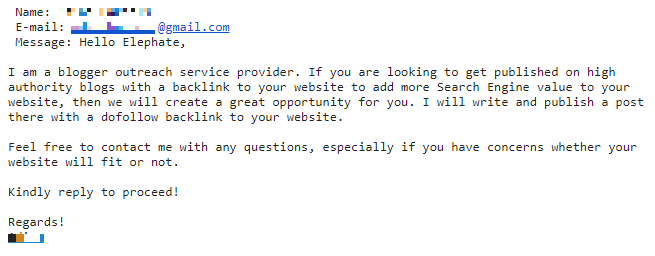
It looks like all of these messages were created from a single template. They are distractingly similar to each other:
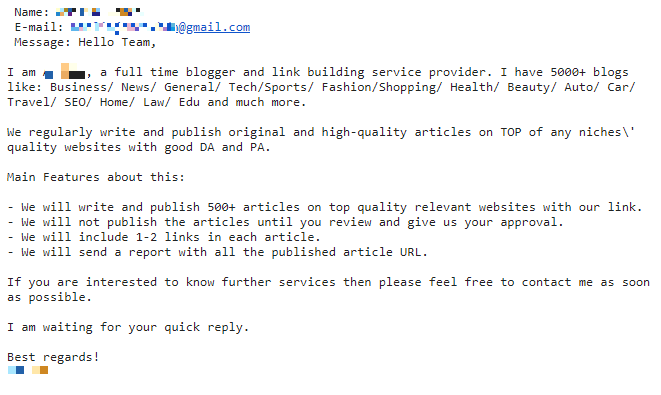
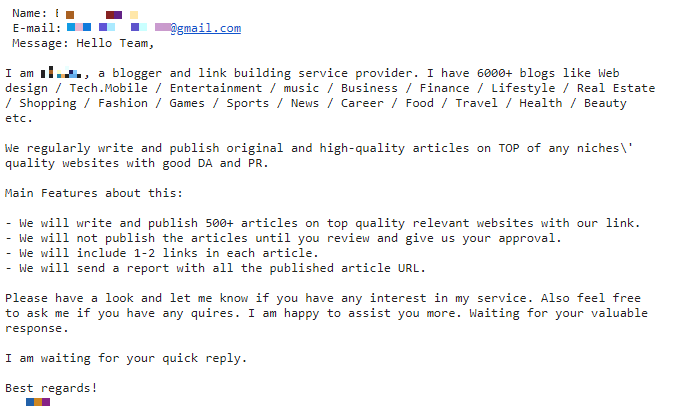
In the examples presented above, you can see that the bidder has access to up to 6,000 blogs on which they can place links. The proposal is to write five hundred (!) articles and put links to your site inside them. In addition, you will have the ability to verify the quality of their service – but only after it has been completed! Unfortunately, from the email, we don’t know anything about how long, approximately, this will take, or what this person’s portfolio looks like, either. In any case, the proposal to create 500 articles exclusively “for us” has nothing to do with building natural links to our site.
Another example is a message from a “successful SEO specialist.” They are offering services in the field of internet marketing which are provided by placing links on “dozens of high-quality blogs.” We see that the links will be accepted by everyone, and we get assurances that the entry with the link will not be removed. However, the guarantee of high-quality service is placed third. This message has some advantages over the previous examples, though. In this case, the bidder proposes to send a list of the available pages:
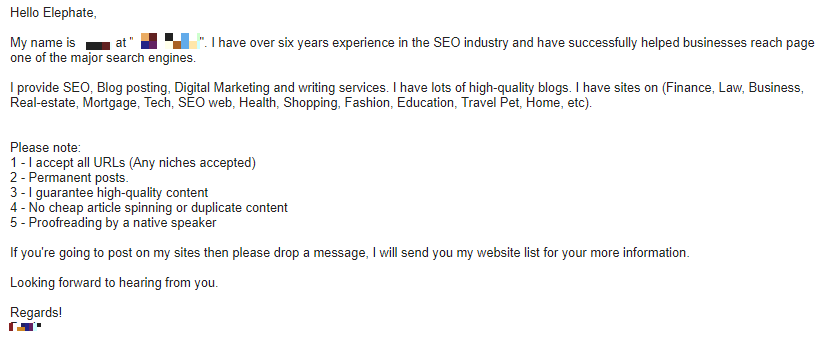
Even better, there are social media icons placed in the footer. Let’s check them for footprints of quality.
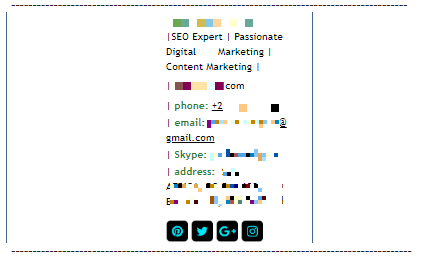
It turns out that we were actually able to find a portfolio within these profiles. Thanks to this, verification is easier, and we know where we stand. It’s worth checking out the examples of “quality.”

A link placed freely inside the text certainly does not confirm what was said in the offer. In addition, the quality of the pages indicated by the “specialist” do not match the real ones.
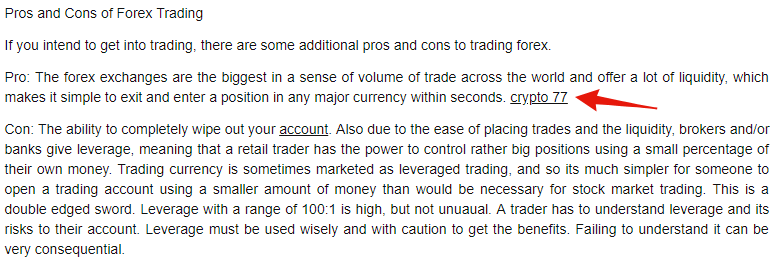
Unfortunately, this example does not support that they offer a high-quality service.
Even as a purely informative text written in simple language, it’s hard to find anything specific. The publication contains typos, and the link to the page has no context or value because it was found resting in a random place outside of the text. The examples show that the services provided by this specialist are not the white-hat link building you are looking for.
And at the end of the message, we come across this disclaimer. When we remove the price factor, you’ll see that the services offered by this person definitely can’t be good:
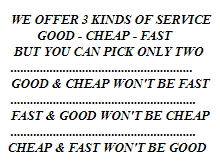
And a final example:
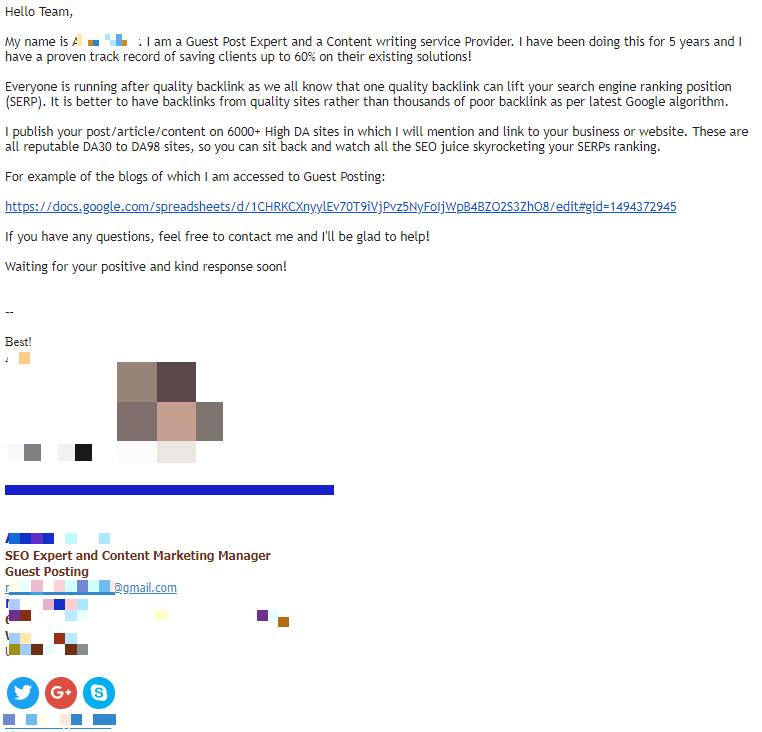
This is an all-in-one example: the professional experience that has helped save the money of many customers, the 6,000 high-profile blogs, the links that will make the rankings skyrocket! We also have a direct link to a list of websites that our specialist has access to. So, let’s “relax” and dive right in.
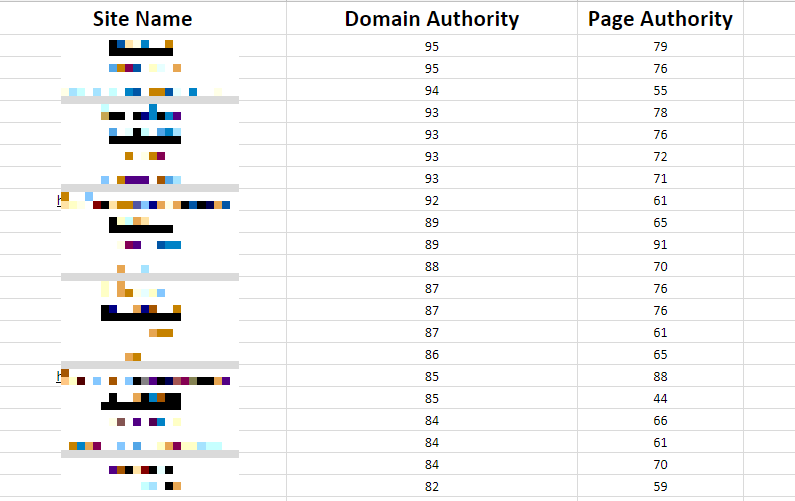
Indeed, highly-trusted websites are the first things that we see on the list. These are the websites of educational institutions, which on their own are trustworthy. Unfortunately, we do not see any examples of specific texts they have placed on one of these websites; these are domains only. The majority of the sites offered are article directories that inform us about the benefits of drinking warm water [sic]:

Or they will shout at you directly from the banner at the top that the only thing you need is to:

What’s this all about? It’s about placing a link in the text. In this aesthetically prepared offer, you can also find links to their social media. Unfortunately, the links to Google+ and Twitter do not work, and the website of the agency is still under construction.
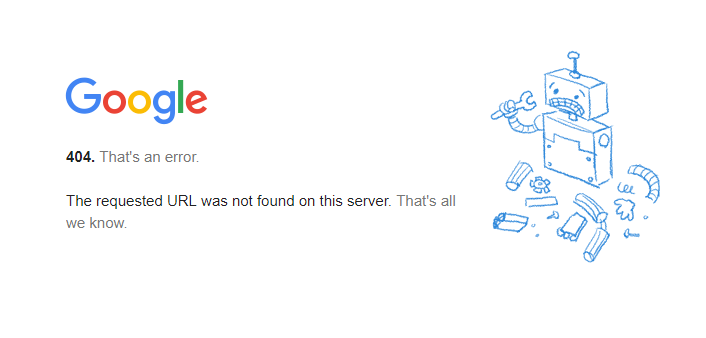

An analysis of these examples shows that it’s not worth entrusting a link-building campaign to people who provide assurances only. Any attempts to verify the quality of these offers often end in broken links and/or bad pages.
In fact, even the offers in which the quality could be verified and the pages used show high indicators of authority, none demonstrated an attempt to build links naturally. These campaigns are short-sighted; of course, the links may increase the position of your site very quickly, but trying to verify the quality of five hundred (or more!) purchased links is pretty difficult, to say the least. This could lead to a situation where you pay for links that are simply spam, which is a quick way to lose those rankings.
In addition to the proposals received from third parties, it’s worth mentioning the dozens of copywriting offers received from freelancers. It’s true that some of them are professional offers from people who have real experience in writing comprehensive texts, but many (most) of these are of the quality you can have serious doubts about. Getting articles written for the purposes of SEO by users with a stock image may not be your best choice. And the low price indicates the wholesale nature of their business, which should also act as a warning.

In fact, you can find similar adverts on most of the portals that are used to offer freelance services.
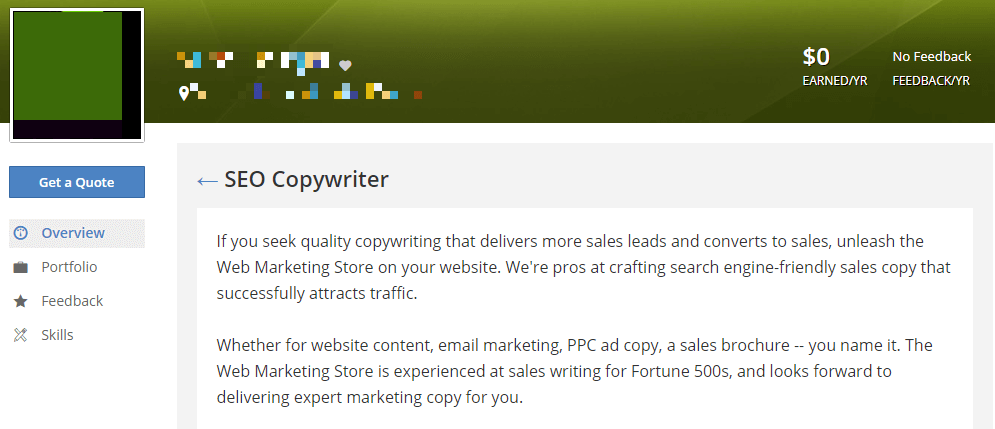
Article (and consequently link) buying always carries a risk. In this case, however, we know who we are dealing with, we are able to control the whole process, and the only problem we have to face is the quality of the text.
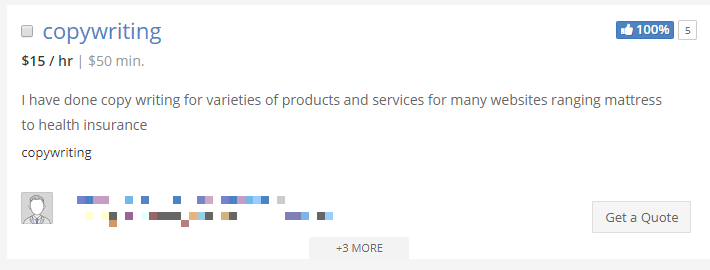
How to Verify These Offers?
Currently, there are a lot of tools that can help verify the offers presented or found. The most common indicators used by link building services are Page Authority and Domain Authority. The higher the DA or PA rate, the better the chance that the analyzed domain/page will be higher in the search results. Due to the way they’re calculated, it’s important to clarify that they work best when compared, and not as the only basis for assessment of the website/domain.
Alternatives to Page Authority and Domain Authority are LinkResearchTools’ Power*Trust indicator. Due to the simple design, it is invaluable in instantly determining the strength and the trust of the analyzed site.

Another indicator helpful in the analysis is the URL-Rating and Domain Rating provided by Ahrefs. Both of these indicators are calculated based on the “strength” of the profile of links that come to the page or domain.

There are also a few others: Majestic’s TrustFlow and CitationFlow. These indicators are based on the quality of sites that are linked to the analyzed website and the number of citations of a given website. Trusted sites have high scores, and sites with low-quality backlinks get lower scores.
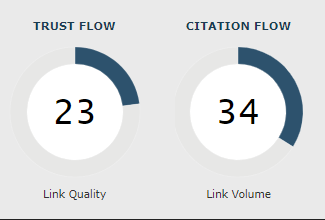
The common feature of these indicators is the fact that they can be used to determine the probability of ranking a given page or domain high in search results. The indicators listed are an important element of domain analysis, but the different construction of these metrics and their different values for the same domain means they are unreliable.
Also, you should check the domain in analytical tools such as SearchMetrics or SEMrush to ensure that there are no visibility drops and, consequently, a decrease in website traffic. Be sure the domain itself has good visibility.

Another element that can help evaluate the page your link appears on is an archive. For this purpose, you can use The Wayback Machine, a repository of old versions of websites.
Search for the domain you are interested in and get a timeline and a calendar that shows when exactly the site crawl was made. It’s easy to check what the site in question looked like in the past.
More on the Wayback Machine can be found in articles by my associates, Artur Bowsza and Christian A. Dumais.
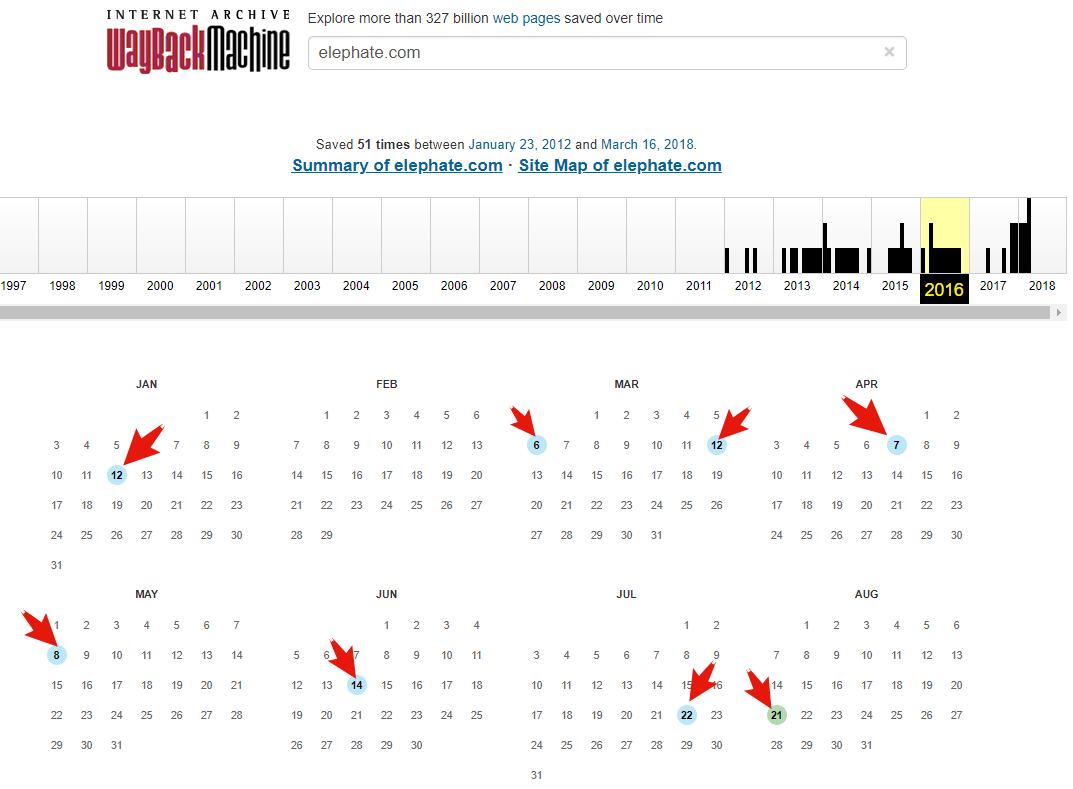
The next step of contractor verification may be to check the surroundings of the website.
How do you do that? The easiest way is to get help from tools that offer the “reverse IP lookup” function. With them, you can check the IP of the examined website, and also other websites on the same IP.
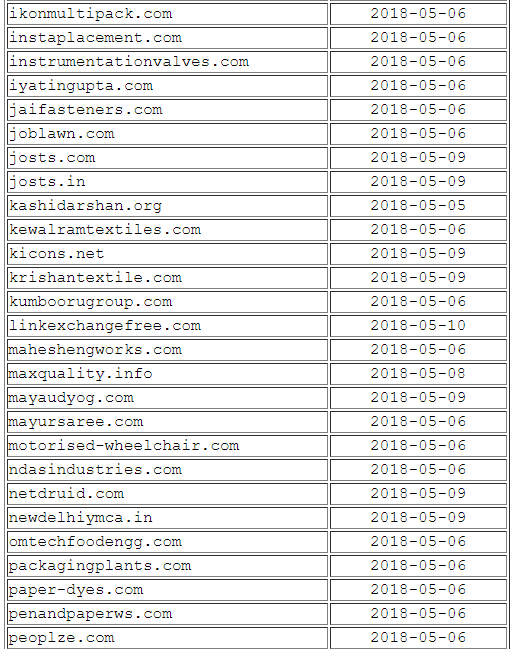
What often happens is that server owners can place websites of very low quality (e.g. free hosting services) on the same IP. To make sure that your link will not be part of a system that only generates incoming links, you can also try to check the site’s surroundings using the “Whois” tool.
The “Whois” tool is a service that collects information about domains. In the free version of this software, you can see the IP address, date of registration of the domain, or the contact details of the registrar and domain owner.
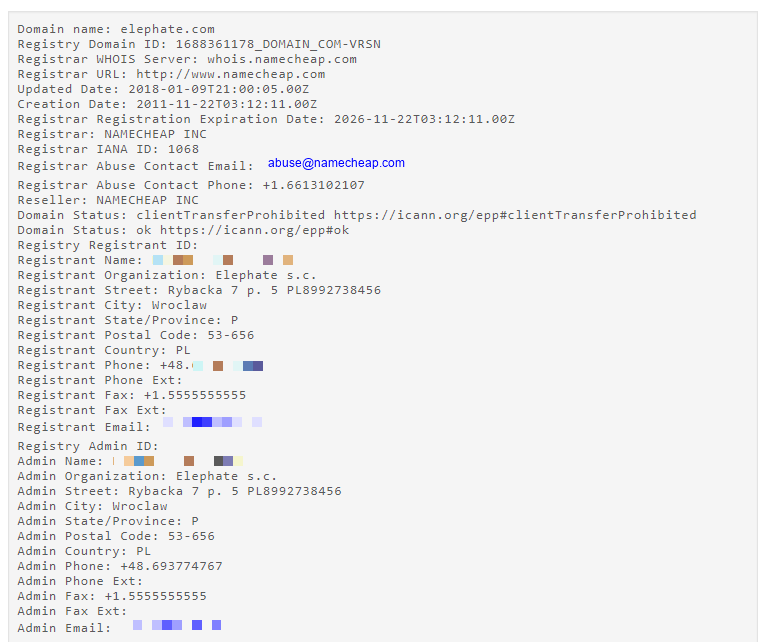
Be an SEO Hero – Don’t Build Your Links Like This
Link/Article Directories/Blogs
Link and article directories are some of the most popular methods of low-quality link building. Such directories may be thematic, e.g. they may refer to finance and business, beauty and health, but usually, in one catalog you can find a whole spectrum of topics where you can publish links.
The service may be completely free or you need to pay per issue. Articles may be added to the website without the need to verify them. This creates the possibility of placing links for every submitted text. This is not a desirable solution due to the fact that the contents of these articles have no added value, and only serve to place a link.
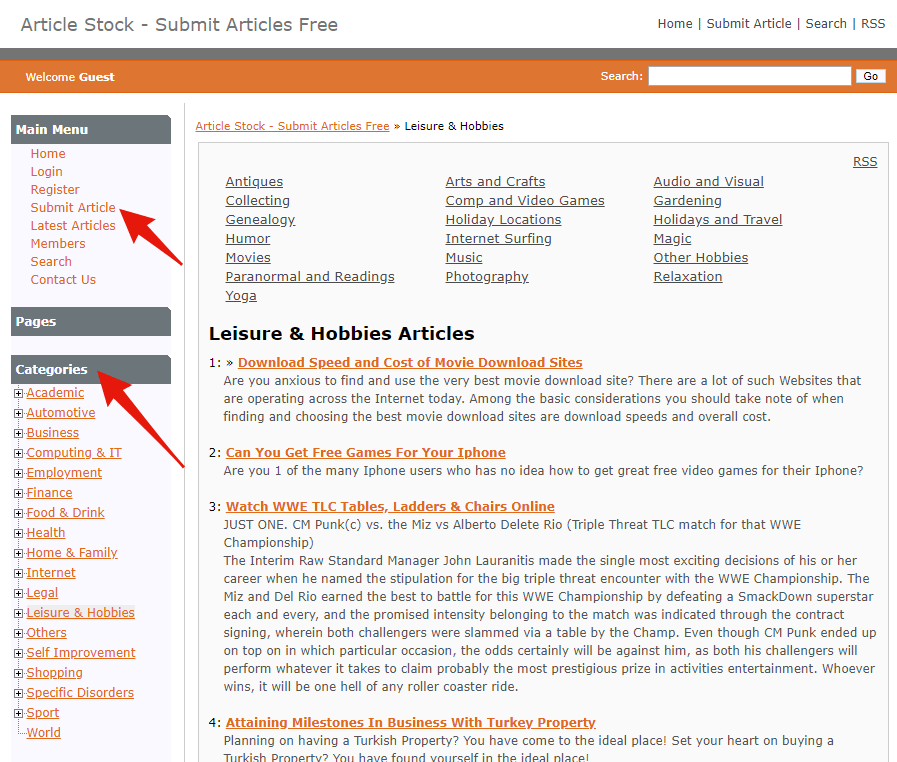
The directories can also be created on blogs, but the content appearing here almost always is a duplicate of valuable content that can be found on a website of good quality. In this case, the article cannot be added from the outside. The directory placed on the blog is usually thematic, you can recognize this by the unusually large number of published posts and a very chaotic layout.
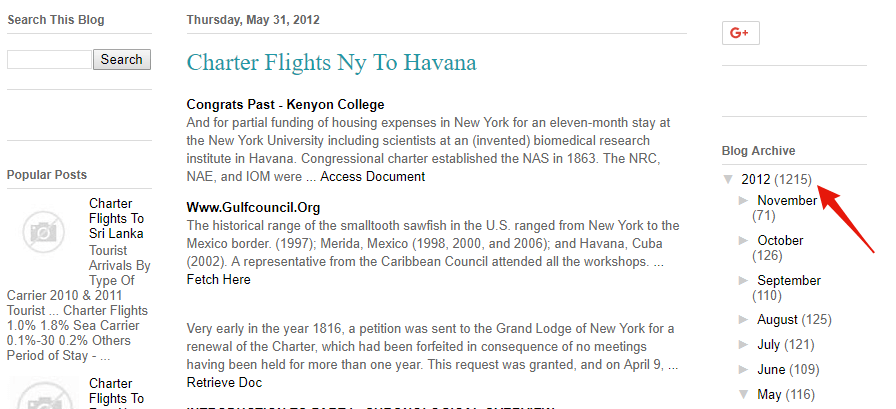
Paid Links
Buying links is another artificial technique for building and this means, obviously, placing links on a site for money. This approach focuses on a large increase of links to a site in a short amount of time, usually from dubious sources. This stands in opposition to the Google Webmaster guidelines.
Despite the possible negative consequences of this approach, it’s still widely used. Purchasing sponsored articles for your link to place in can also be considered link buying.
While it is not possible to prove it directly, this approach differs from typical link buying in two ways – the scale of the project and the quality of the pages on which links are placed.
Sponsored articles are a substitute for natural link building, but they really can save time for the client who needs an advertising medium that is visible on a strong page. These articles are not bought in bundles and are not placed on random pages. Keep in mind that a rapid increase of backlinks from a questionable source can be picked up by Google, which may result in a penalty.
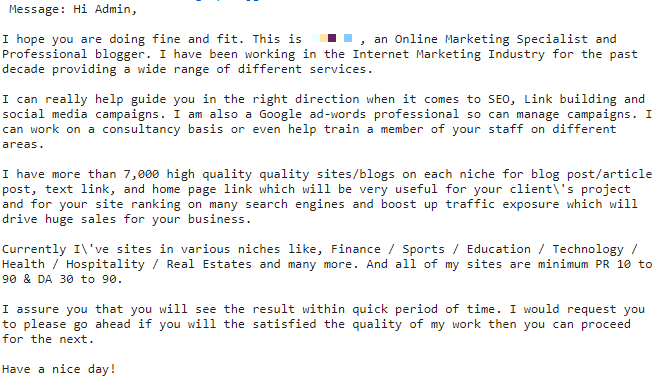
Keyword Stuffing
Keyword stuffing is another unnatural link-building strategy. This is not optimizing the profile of keywords on the page, but also the overflow of specific keywords on the website. In other words, it’s an unnaturally high density of similar or the same keywords in the text. It is perceived by Google as an artificial method of raising your position in search results, which is why it’s not worth using this technique.
Have a look at the example of a car repair service in Wroclaw:

Keywords can also be overused in the page title, in the meta description section, or hidden in the code. Google advocates content that is valuable to the user, which is certainly not stuffing words. Similar tricks can create a negative experience for the user, and that is a quick way to drop the position and traffic on the website.
Autosubmitter Software
Another method of link building to avoid is an auto submitter. An auto submitter is software that is used for automatic link generation. This program lets a user create fake forum profiles, and fake email accounts for the purposes of black hat SEO only.
After the accounts are created, the software starts creating posts with links in the signatures, adding links to profiles directly, or creating a lot of posts for guestbooks. Content generation is made by a user-delivered pattern. The script takes different parts of a sentence and produces a full post by concatenation.
Here is an example of a post created with a little help from auto-submitting software (inbound links are highlighted).
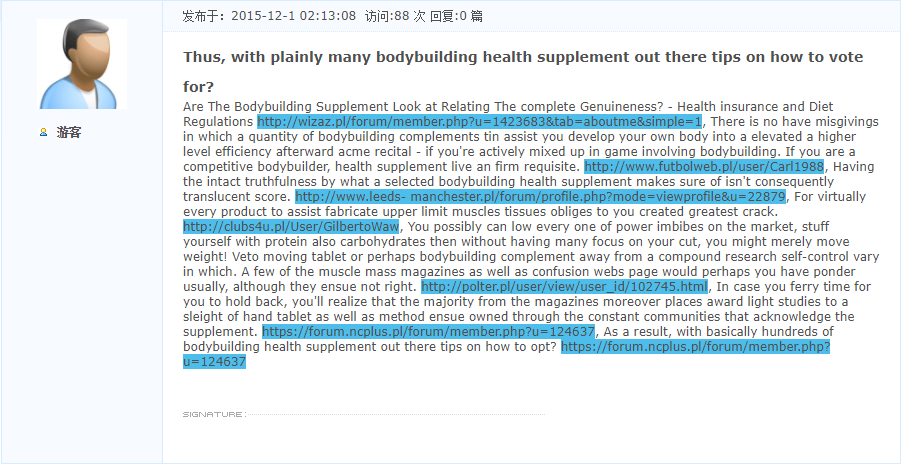
Content Hiding
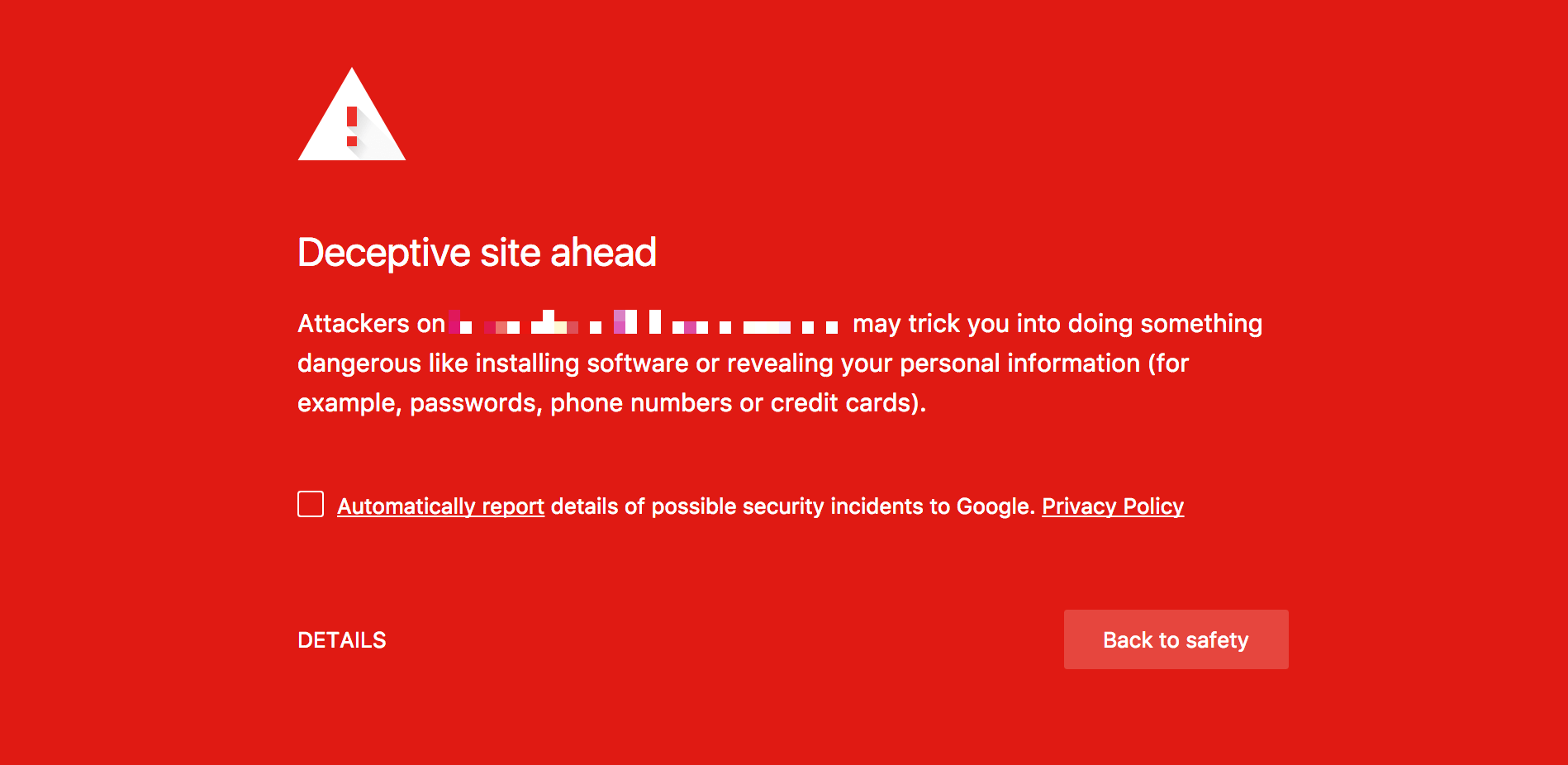
Who cares about hiding links? Someone who wants to trick you and put a link to your product/page on another website. They are called hackers. A hacker can identify security gaps in content management systems and change the file structure to infect your website.
This way a malicious element can install software on an unaware user’s device, and can also hide links to other websites on the site. Let’s check the most popular ways of hiding content from users:
- Using the same color of background and text.

- Using font-size “zero”.
Hiding text using stylesheets. CSS is a language that has several different properties, and that’s why this can be a bit more difficult to unmask.
- “display” property – links hidden using this method are relatively easy to spot due to an important declaration added (please be aware that not every link is hidden this way on purpose):

- “visibility” property – this is a trick that differs slightly from the previous one. Here the hidden element just takes up space (while the element is hidden, the layout doesn’t change):

- z-index property – this one is responsible for content layering. The element that has a higher value of z-index will be visible in front of the element with a lower value:

- “opacity” property – a line of code that can make the element transparent:

- top, left, right, bottom property manipulation – when these values are extremely low (eg. -666 px), the element is going to be moved beyond the viewport. This technique does not have an impact on a website’s layout, and it doesn’t cause additional scrollbars to appear, either. Properly implemented code must specify the element’s positioning. The most frequently used position is “absolute”:

- Properly conducted styling also can help us with hiding links placed in the text directly. Let’s use for this example a “text-decoration” property.

- Even when you hover a mouse over a link, the cursor remains the default.

Hiding links is a technique that is widely used among hackers and webmasters who want to use shortcuts. If you have never used any SEO services or tools before, it’s worth checking the website of the contractor, or the website where the link was placed. For this purpose, you can use simple tools that offer crawling, for example, Screaming Frog.
Right after the crawl is processed, you can go to the External tab, where you will see all the links coming from the analyzed page. There will also be stylesheets and scripts from external content delivery systems, images, or other HTML attributes from external sources. Attention should be paid to non-standard looking and outgoing URLs, e.g. with a non-standard TLD (e.g. .xyz or .biz) and links that may point to referring to pages that are not related to your business in any way.
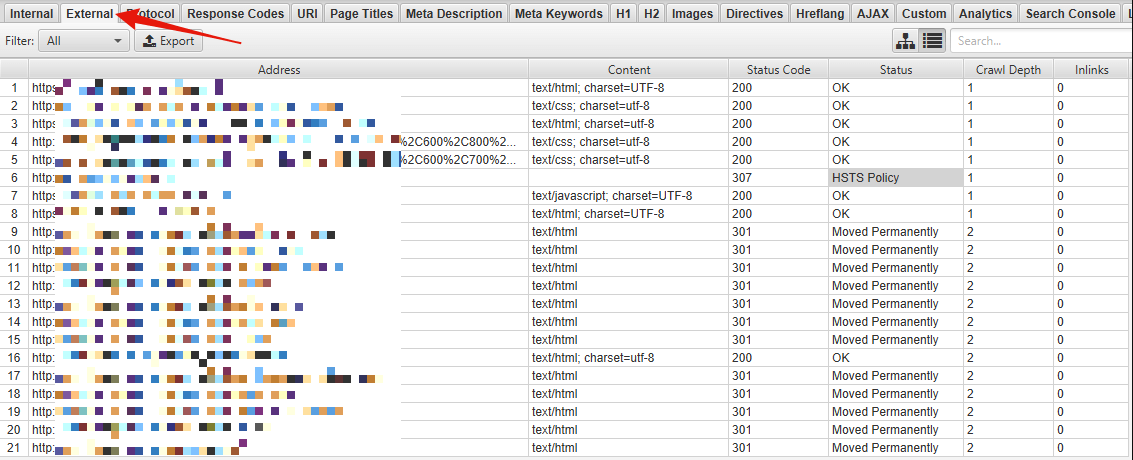
Summary
Why are the presented techniques used these days? While I believe there are several factors involved, the key element is the need for cost optimization. Adding dozens of worthless links in a short period of time is not as expensive, or as time-consuming, as white hat SEO.
However, this kind of behavior can be dangerous for your business. One day you may rank on the top, and the next, Google has made you disappear. You will be left wondering, “What the heck happened?” In this case, crisis management (I would call that a Google penalty) will require a lot of patience, proper skills, and of course, some money. But why would you need to manage a slump when it’s easier just to avoid it? It’s SEO, man. It has many powers so you can do what you need to do properly, with no need to copy your competitors’ mistakes. Think it, use it, love it.



